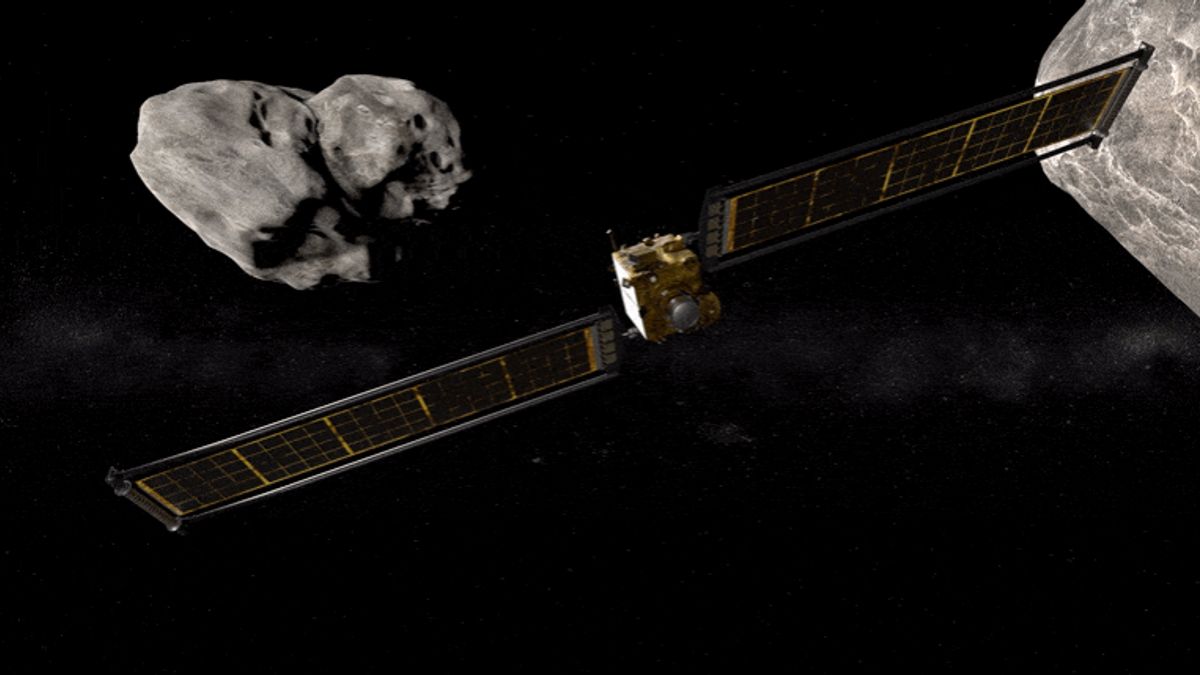JAKARTA - In less than 24 hours, NASA and SpaceX's historic missions will finally be carried out, where the Double Asteroid Redirection Test (DART) spacecraft will crash itself into an asteroid to save Earth.
DART is part of NASA's defense strategy, managed by the Johns Hopkins Applied Physics Laboratory (APL) inpi, Maryland.
Weighing 1,320 pounds, DART will hit itself at a speed of 4 miles per second towards Dimorphos, a moon orbiting an asteroid near Earth Didymos.
"DART is turning science fiction into scientific fact and is proof of NASA's proactive innovation and innovation for all," said NASA Administrator Bill Nelson.
Even so, asteroid Dimorphos poses no threat to Earth. The mission was only designed as a test of planetary defense with the aim of proving the space collision mission could change the orbit of Dimorphos around its parent Didymos slightly.
Once DART is destroyed, ground-based space telescopes will evaluate Didymos and Dimorphos to see how much orbital change.
Launching CNET, Monday, September 26, DART itself has been equipped with advanced guidance, navigation and control systems called Small-body Maneuvering Autonomous Real Time Navigation (SMART Nav), as well as Didymos Reconnaissance and Asteroid Camera for Optical Navigation (DRACO) which will be activated for the last dive, taking photos every second.
NASA said the new SMART Nav software was made specifically for the DART mission. Meanwhile, DRACO will provide NAV SMART with images, and then SMART Nav will collect and process these images using a computing algorithm to determine the direction of DART.
In addition to helping the mission stay on track, DRACO will take pictures during the flight and send them back to Earth at a speed of one per second. Then, NASA will broadcast the images on a live broadcast on NASA TV's YouTube.
Meanwhile, small Italian Light Cubesat for Imaging Asteroids satellites will also sneak out of DART on their way to their target, and will monitor when the collision takes place.
Italian Light Cubesat for Imaging Asteroids will take high-resolution photos from the crash site and capture how damage occurred to the 525-foot-high asteroid.
To watch a live broadcast DART crash into Dimorphos, you can watch it at 16:14 PT/07:14 ET Monday, September 26 or Tuesday, September 27 at 06.14 WIB via YouTubeNASA TV.
The English, Chinese, Japanese, Arabic, and French versions are automatically generated by the AI. So there may still be inaccuracies in translating, please always see Indonesian as our main language. (system supported by DigitalSiber.id)








